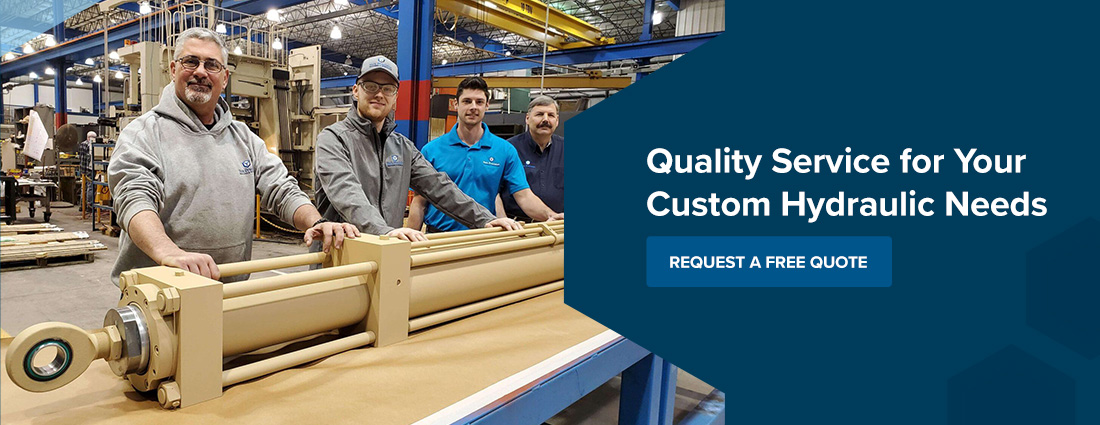Preventing Hydraulic Failure in Aging Equipment
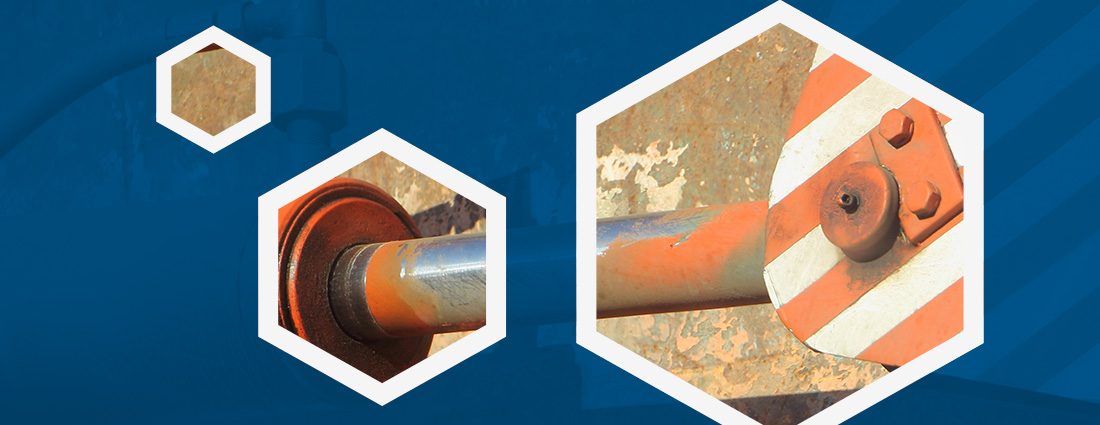
The risk of hydraulic failure increases as industrial equipment or machinery age. These systems perform critical load-bearing tasks, power heavy machinery, execute critical operations and assist manufacturing processes. When failures occur, they lead to unplanned repair expenses, production losses, downtime, and even potential injuries and loss of life. Taking steps to prevent hydraulic failure is more than a matter of economic prudence — it is a strategic process that ensures operational continuity and employee safety.
Organizations can start implementing preventive measures and solutions by understanding the challenges. This proactive approach can contribute to the reliability of their equipment to safeguard their bottom line and competitive edge.
Risks Stemming from Aging Hydraulics
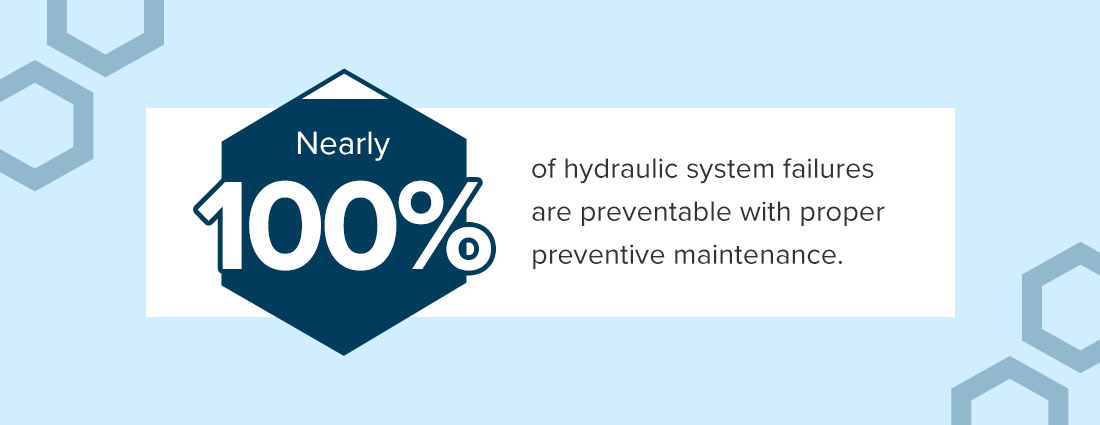
Nearly 100% of hydraulic system failures are preventable with proper preventive maintenance. Leakage and contamination issues expose workers to burns, bruising and abrasions. Pinhole leak injuries, in particular, can lead to serious complications like septicemia. Other common issues from aging hydraulics include:
- Imprecise or faulty load control
- Excessive heating
- Human error
Read more on the common causes of hydraulic system failures.
Prevention of Aging Hydraulic Equipment Failure
Maintaining the reliability and efficiency of industrial hydraulic machinery depends mainly on preventing the failure of aging equipment. Implement operational best practices, like avoiding pressure spikes, using the hydraulic system within its design parameters and reducing excessive heat to bypass premature equipment failures. Another best practice is adhering to the manufacturer's recommendations for fluid types, operational procedures and maintenance. A few additional key prevention strategies to incorporate are:
- Seal and hose replacement: Replace seals and hoses to prevent leaks and maintain the system's integrity over time.
- Temperature control: Use cooling systems and maintain fluid levels and environmental conditions to manage operational temperatures.
- Fluid replacement: Be sure to change hydraulic fluid according to the manufacturer's instructions or based on a fluid analysis result. Fluid with the appropriate additives can help to extend the hydraulic system's life.
- Hoses heat aging: Lessen the effects of heat aging on components by ensuring that hoses running through equipment are rated for the system's operating temperature. Avoid running hoses through these high-temperature areas unnecessarily to ensure component longevity.
- Fluid management programs: Comprehensive fluid management programs, including fluid selection, cleanliness practices, and filtration, will contribute to the longevity of hydraulic equipment.
- Proper filtration: Replace filters often using high-quality materials to help the system remain effective. Checking and replacing hydraulic filters, especially when there are clogs, can help avoid excess downtime and costly component repairs.
- Spare parts inventory: Keep critical spare parts on hand to reduce downtime when components fail.
- Component upgrades: Retrofit or upgrade aging components to improve operational efficiency and performance.
- Fluid contamination control: Strict cleanliness measures when handling hydraulic fluid, equipment and components can minimize opportunities for contamination. Include clean work areas, containers and tools in this practice.
- Education and training: Maintenance personnel must be knowledgeable and well-trained in hydraulic systems. Offer periodic refresher training to staff members working with equipment to ensure safe operations and adequate maintenance.
- Start with the right components: For high safety and high-performance load-holding and locking needs, do not cut corners on price or quality. Seek a failsafe custom solution, like our innovative and versatile Bear-Loc® device, that performs instantly and reliably.
Ongoing care plays a critical role in preventing aging equipment failure. This includes lubricating critical parts, inspecting cylinders, actuators and potential leaks, component maintenance on motors, pumps and sumps and checking fluid levels. A root cause failure analysis helps identify and eliminate problems to remove the risk of encountering these issues in the future.
A Component to Prevent Failure
It is essential to have a dependable hydraulic actuator that you can use to lock and control loads. This component ensures that workers have precise and reliable control of loads. It also plays an important role in preventing aging equipment failure through:
- Load regulation: A hydraulic actuator gives workers an adjustable, controlled force to move or stabilize loads. It prevents overloading and sudden, uncontrolled movements that can damage equipment.
- Shock absorption: Hydraulic actuators can absorb shock and vibration, which reduces impact in the event of sudden load changes. This capability helps to prolong equipment life span and prevents structural damage to equipment.
- Variable speed and force: These components are adaptable and flexible enough to handle different load requirements in most industrial applications.
Preventive Maintenance
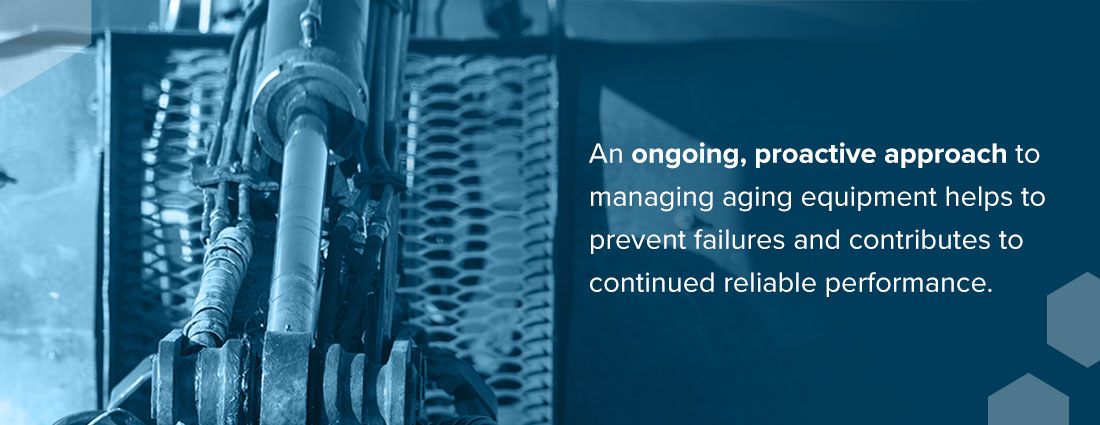
An ongoing, proactive approach to managing aging equipment helps to prevent failures and contributes to continued reliable performance. This reduces downtime, lowers maintenance costs and extends the life span of aging hydraulic equipment. Key elements to incorporate into a preventive maintenance program are:
- Scheduled inspections: Routine maintenance should include checking for worn seals, leaks, loose connections and the overall condition of hydraulic equipment. This helps to pick up and handle potential issues before they escalate.
- Condition monitoring: Use sensors and condition monitoring systems to assess the health of hydraulic equipment continuously. These systems often provide real-time data and predictive maintenance alerts to simplify the preventive maintenance process.
- Immediate action: As soon as leaks appear, hydraulic fluid is making its way out of the system. This demands immediate maintenance to prevent further component breakdown.
Hydraulic Locking Systems
A hydraulic locking system is vital to load control equipment performance and safety. However, not all are designed to automatically lock when equipment loses power, which means that lost control can cause major damage, injuries, and even death.
A hydraulic actuator offers a contingency plan that enhances the safety and reliability of hydraulic systems performing critical load control. If other components in your aging equipment fail, it is vital to have a fail-safe load control component. Ask yourself these questions:
- Which components do you use to control or lock loads?
- Will these components continue to support loads or will they drop the load and create a safety risk?
- Will the component fail if there is a failure in another part of your hydraulic system?
Adding a Bear-Loc® locking unit by itself or with an actuator to your equipment offers fail-safe load control reliability. It will never drop its load and can hold the load indefinitely. Bear-Loc® also provides zero backlash for precision, and infinite positioning for optimal control, as well as bi-directional locking and high system stiffness. Bear-Loc® is a customizable solution that can operate on pressures up to 5,000 psi and can control loads up to four million pounds. Rod diameters can range from one inch to 27 inches. Durable in extreme conditions such as maritime and subsea, the Bear-Loc® can last for decades when operated properly.
No other hydraulic load control solution offers all of these features.
Corrective Maintenance
Corrective, breakdown or reactive maintenance is a strategy for managing aging hydraulic equipment that aims to minimize downtime while increasing system reliability. While preventive maintenance aims to prevent issues, this strategy addresses problems as they occur. It is, however, a last resort:
- Downtime: Repairing a system after it has failed leads to excessive downtime, which can disrupt operations and reduce productivity.
- Safety risks: Repairing failed equipment can occur in challenging conditions, increasing the risk of accidents or injuries on duty.
- Unplanned expenses:Replacement or repair, coupled with downtime, can result in unplanned expenses, especially in cases where the component failure affects widely, leading to further damage.
- Reduced life span: Done frequently, corrective maintenance can accelerate degradation in equipment, contributing to more frequent failures.
Overall, corrective maintenance includes identifying failures in the hydraulic system and using diagnostic tools to pinpoint the problem. Repairs should be performed quickly while observing strict safety considerations and working with these high-pressure hydraulic systems to avoid injuries.
Load Control in Industrial Applications
Many industries rely on equipment that uses hydraulics. Preventing failure with proper load control measures creates safer working conditions and ensures continued operability. Using hydraulic locks is common. When safety and performance are critical, the Bear-Loc® system is unparalleled. Consider the needs and risk factors of these sectors:
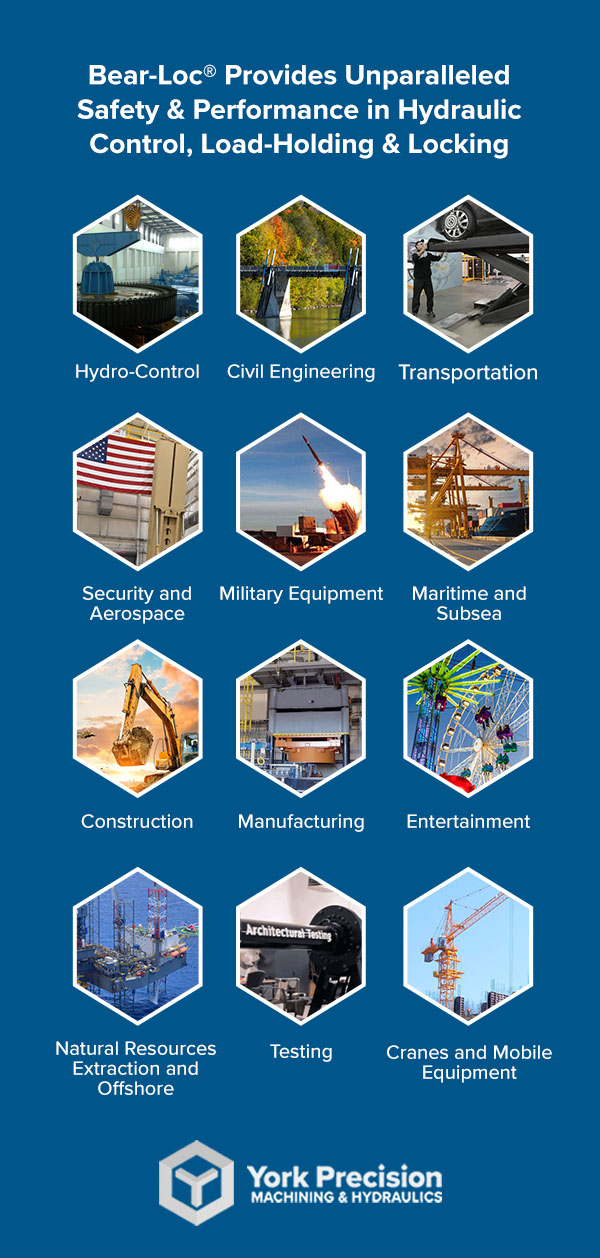
- Hydro-control & Electric Generation: Hydro-power systems like dams use gates and valves to control the flow of water through the turbines. A load locking system ensures these gates remain in the correct position to prevent sudden changes in flow rate. The Bear-Loc® enables precision adjustments so the gates can be locked at any position. These features also apply to civil flood control measures that ensure community safety.
- Civil Engineering: Bear-Loc® is a superior solution for bridges, locks, and lifts - to name just a few examples. Moving structures help control land and water traffic, but their operation requires precise controls to protect from injuries or delays. Hazards compound during natural disasters and other emergencies, making a fail-safe hydraulic locking system for these constructions essential.
- Cranes & Mobile Equipment: Mobile equipment with hydraulic systems present their own array of risks. For example, cranes, whether fixed position or mobile, are large, heavy machines that require extensive safety considerations. Our load control for crane and mobile hydraulic systems ensures continued performance and worker safety by preventing boom movement if any part of the system fails.
- Security and Aerospace: From security inspection to rocket launch infrastructure, hydraulic systems must reliably perform every time. Often, they require very large-scale systems. With 4 million pounds of load holding capacity, Bear-Loc® is unparalleled.
- Military: Bear-Loc® instant locking and positioning performance makes possible mission success, while its fast, fail-safe reliability gets warfighters out of harm's way. Missile launchers and large military construction applications are just two examples.
- Entertainment: Behind what the audience sees and experiences is a network of powerful hydraulics. These systems bring imagination to life, and to do that safely, designers and engineers rely on precision hydraulics. If a system failure occurs, it could be catastrophic for many people — audiences watching a show, performers on stage, amusement park visitors enjoying rides or guests interacting directly with an exhibit — could all be at risk. Plus, Bear-Loc®’s unique design requires very little hydraulic fluid and does not rely on moving parts, valves, or other components to maintain its fail-safe locking/load holding.
- Construction & Architecture: Bear-Loc® is the ideal choice for very large construction equipment (e.g. manlifts, drilling, load lifting and equipment exposing operators to opening and closing) and architectural infrastructure (e.g. hydraulic rigging, elevators) because of the risk exposure of dropped loads to humans and the surrounding environments. And if another part of the hydraulic system fails, Bear-Loc® can still hold the load.
- Manufacturing: Industrial manufacturing facilities use hydraulic equipment such as presses for many applications, but they come with significant hazards. Since hydraulic presses tend to operate on heavy-duty applications and require lock-out for personnel to perform maintenance, Bear-Loc® fail-safe reliability fulfills safety requirements and peace of mind for operators.
- Natural Resources Extraction & Offshore: Safety measures on offshore rigs and in nuclear environments, to name two examples, quite literally have human lives at stake. A failure can cause injury, death and catastrophic environmental damage, making reliable control of hydraulic equipment (e.g. drills, platforms) mission critical. Bear-Loc® holds tremendous loads yet offers instant locking and fast release.
- Maritime & Subsea: Saltwater exposure and subsea environments take a brutal toll on equipment. YorkPMH has decades of experience serving marine and subsea sectors and applications, providing appropriate materials and coatings that reliably perform for years. And because Bear-Loc® does not require human intervention to operate, it is ideal for use in hostile environments.
- Transportation: Safety is paramount in the transportation industry. Machine mechanics, drivers, and waste management workers are just a few examples of the transportation-related occupations where equipment manufacturers who go the extra mile implementing safeguards earn market leadership. Mechanical lifts, for example, require a fail-safe solution to prevent heavy parts from falling when a loss of pressure occurs. Trash collection vehicles also use hydraulics to operate their various systems. The Bear-Loc® is designed to fulfill the customers’ requirements. In an age of quick fixes and planned obsolesce, our customers are grateful that Bear-Loc®’s durable reliability provides outstanding ROI. Proudly American made and owned.
- Testing: Across many industries, hydraulic powered testing must deliver power and consistent results. Bear-Loc® is the solution of choice for such rigorous testing environments, ranging from underwater, to crash test, to wind tunnels, to manufactured product testing, and more.
Quality Service for Your Custom Hydraulic Needs
Any disruption to your hydraulic systems can compromise actuator and valve efficiency, which allows machines to perform adequate load control. Aging equipment can remain reliable and work at total capacity with a regimen of preventive measures. Increasing the life span of hydraulic fluid and equipment involves three fundamental principles. Conducting preventive maintenance, routine testing for hydraulic fluid contamination and corrective maintenance.
York Precision Machining & Hydraulics LLC can custom-build your load-holding actuators and cylinders with quality and precision. We design and build custom systems across the broad array of industries using hydraulics. Whether your project is newly designed or a retrofit, our custom-designed Bear-Loc®can be integrated in a wide range of configurations, including linear actuators, piston and rotary designs, and in both tie road and mill type construction. Our engineering team can also design mounting configurations for your application. Why take a change on performance and safety? Contact Us today or call us at 717-764-8855.
Awards & Certifications

ITAR Registered #M39417

Outstanding Performance

Excellence Presented By Commander

SIBC Member
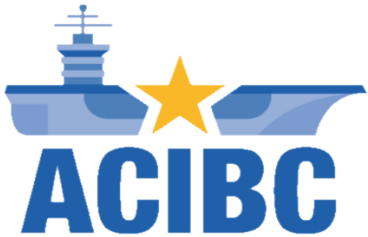
ACIBC Member

NFPA Member

Made In USA
Last Updated: December 15th, 2019

